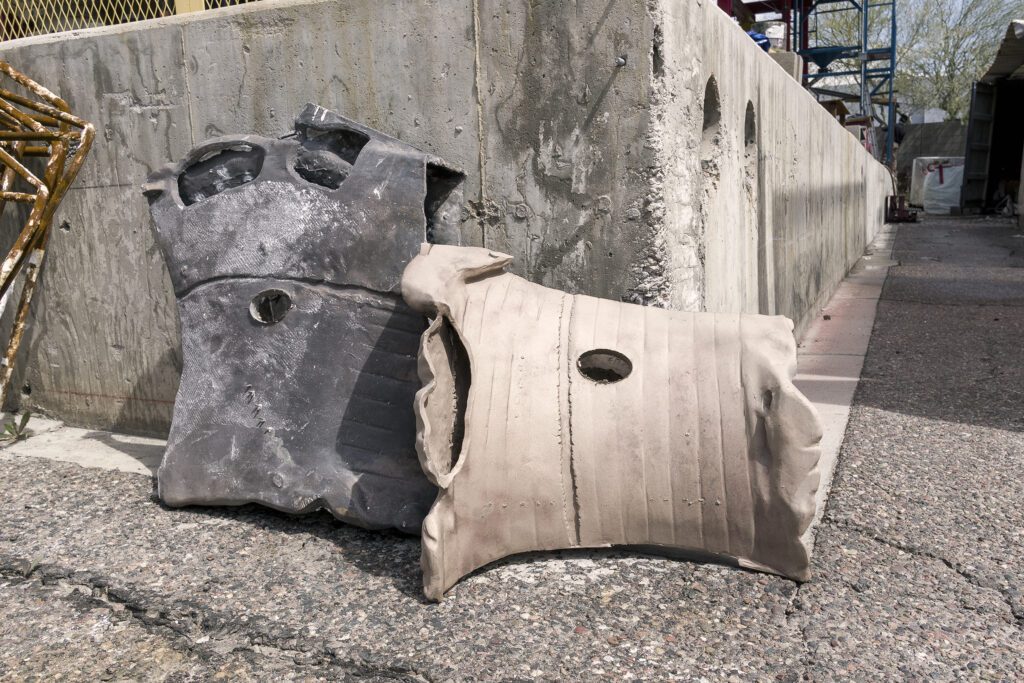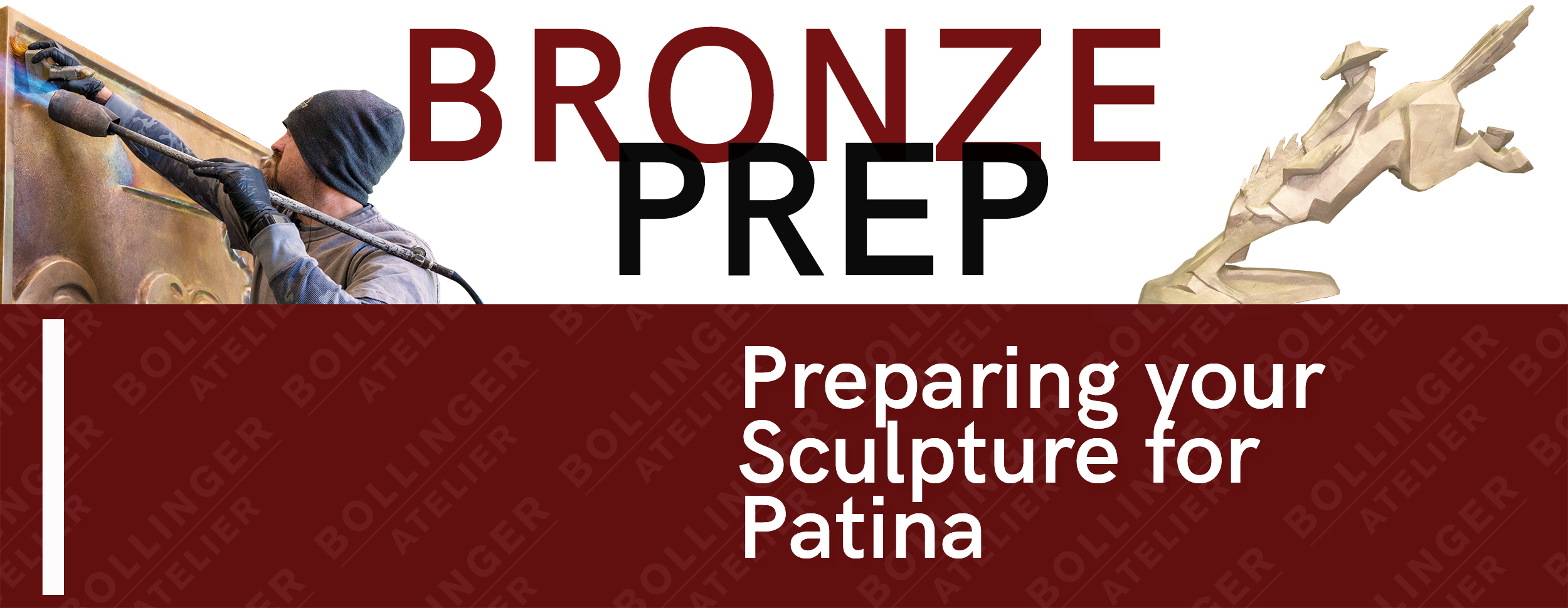Written by Daniel Mariotti
Photos by Daniel Mariotti
How to prep a bronze for patina:
*For any patina work you are doing, make sure the appropriate safety equipment, such as gloves, safety glasses, and a respirator are in use. If possible, work in a well-ventilated area or outside.
In order to achieve a uniform and clean patina, bronze needs to be appropriately prepped prior to adding any kind of chemical or heat to the surface. Likewise, bronze must be free of foreign contaminants such as oils, shell material, dirt, or rust.
Surface preparation will vary based on the desired end result. Relatively speaking, a polished surface will end in a polished result and a matte surface will stay relatively matte.
A matte surface is fairly easy to achieve. Typically, sandblasting is the fastest and easiest method. Depending on surface quality and type of patina desired, a variety of blast media can be used and at varying pressures. Higher pressures and coarser grit will leave a more “toothed” finish and in some cases actually diminish the bronze while a lower pressure and softer grit, (I.e. walnut shell) will leave a softer finish.

Sandblasting and Sanding
We sandblast the surface with red garnet sandblasting media. Garnet is a naturally occurring mixture of almandine garnet with some magnesium and manganese substitution for iron. One thing to keep in mind is to not touch the piece with your bare hands which would leave behind unwanted oils. Use nitrile gloves if touching the piece is necessary.
If the desired patina requires a shiny finish or an opaque finish with some bronze tones showing through, it may be necessary to NOT sandblast the surface after the final assembly and welding are completed.
From here all the metal finishing is completed with varying grits of sanding abrasives or even lightly wire wheeling the surface.
For some processes, the surface needs to be abraded with a wire wheel or vinegar to etch the surface lightly which allows dyes or coatings to adhere better.

To view a selection of patinas we offer, please look at our Patina Library Page.




